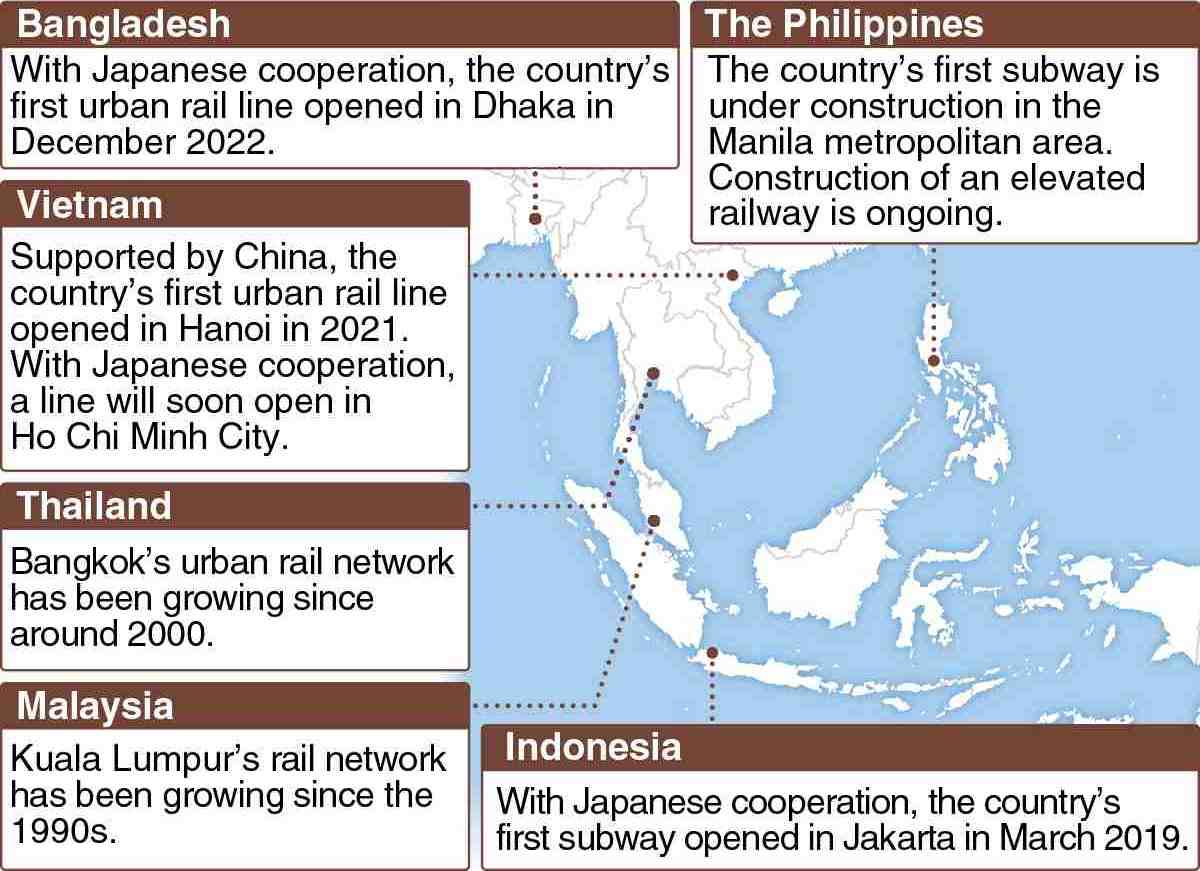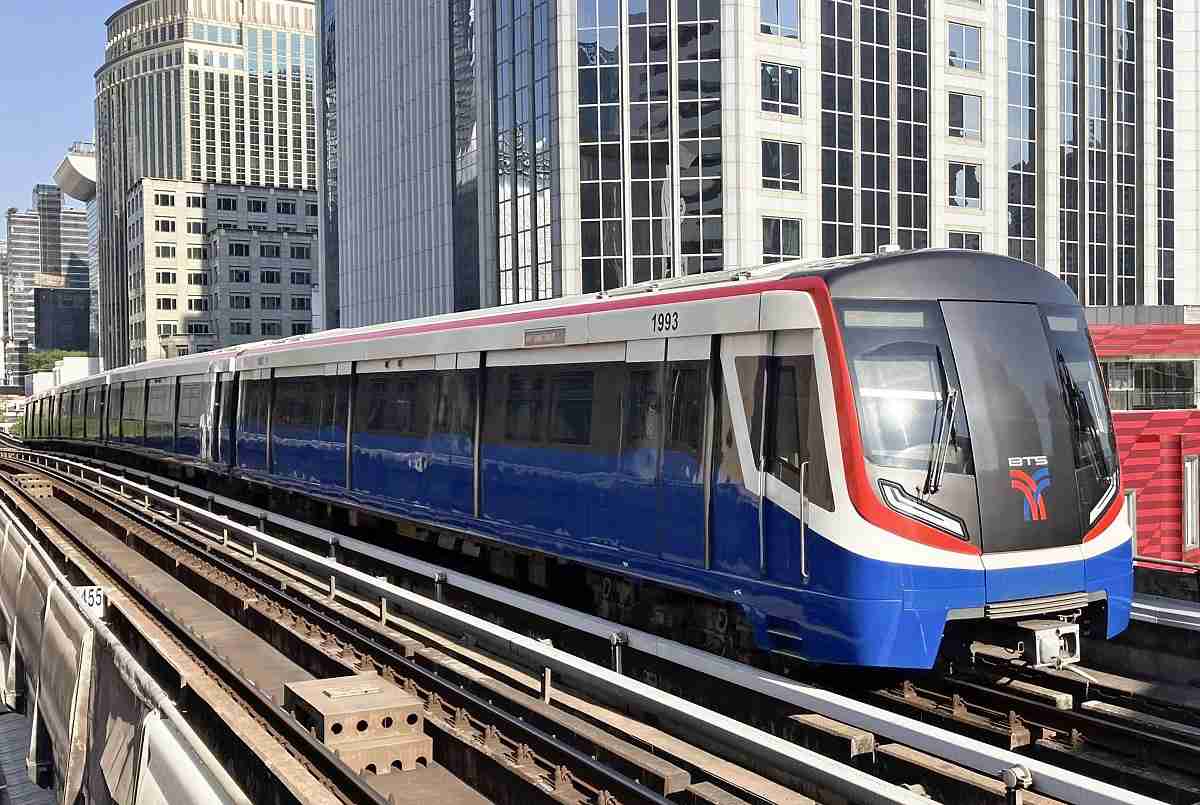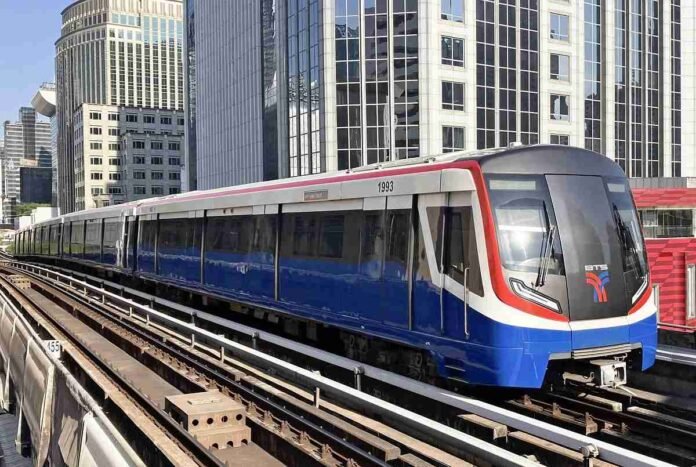In Valenzuela, Philippines, subway construction work is underway using Japanese tunnel technology.
1:00 JST, May 27, 2024
Around the world, railways, which are environmentally friendly and help reduce traffic congestion, are becoming increasingly important in mass transportation networks. Many major cities in Southeast Asia are now working hard to develop urban railways in the hope that this new infrastructure will stimulate economic growth. Japanese companies, with the technology and skills to build high-quality infrastructure, are making their presence felt in these places.
A shield tunnel machine with a diameter of about seven meters digs through soil and sand, adjusting the angle in millimeters as it goes, in an underground chamber near Manila. Once completed, the tunnel being dug will be the first subway in the Philippines and is expected to ease severe traffic congestion in the city.
In addition to some of the world’s most advanced tunneling technology, the vast amount of know-how Japan has developed over more than 150 years of railway construction has gone into the Manila Metro project.
“The quality of the soil changes with every meter that is dug,” said Mitsuru Yasui, construction manager of Shimizu Corp., a major general contractor for this section.
Yasui has been involved in tunnel construction projects in Japan and other parts of Asia for about thirty years.
“We need to look at the dirt left after drilling to determine the condition of the ground after that point,” he said.
Philippine President Ferdinand Marcos Jr. attended a ceremony to mark the start of tunnel construction in January 2023, and national expectations for the project are growing.
A Philippine Transportation Department official said the Philippines still has limited expertise in the construction, operation and maintenance of public transportation systems, and that Japan’s support would make the project possible.
Much fewer problems
Bangkok, once known as one of the busiest cities in the world, is expanding its urban rail network. The MRT Purple Line, which opened in 2016, uses rolling stock from Japan Transport Engineering Co., a subsidiary of East Japan Railway Co. (JR East). JR East, Marubeni Corp. and Toshiba Corp. jointly manage and maintain the line.
According to the Thai Rail Transport Department, the Purple Line has had far fewer problems than other lines, accounting for only about 1% of all problems occurring on Bangkok’s six urban rail lines in 2021. JR East says it is trying to reduce the number. problems by closely monitoring the wear of parts and replacing them if necessary.
In December 2022, Bangladesh’s first urban railway line opened in Dhaka, using Japan’s Official Development Assistance Office and introducing convenient facilities such as women-only cars and platform doors. A new line of train wagons from Hitachi Ltd. is expected to open soon. are opening in Ho Chi Minh City in southern Vietnam.

Urban rail networks are expanding rapidly in Southeast Asia
Beyond the railway lines
The knowledge Japan has acquired is not limited to the railway sector itself, but could potentially facilitate development in the areas around train stations. In Southeast Asia, railway companies and real estate developers do not coordinate, resulting in situations where a station is built, but there are no commercial facilities around it.
“People in Thailand still think of railways and real estate separately. In Japan you integrate them so things are more efficient,” said Bangkok Governor Chadchart Sittipunt, a former transport minister and an expert on transport policy.
JR companies earn revenue not only from ticket prices but also from real estate, he said. He added emphatically: ‘We can learn more from you [Japan].”

A metro train runs through the center of Bangkok.
In addition, Japan’s Urban Renaissance Agency (UR) is helping to develop the area around a railway terminal in northern Bangkok.
Besides the usual benefits of doing business, there are other advantages for Japanese companies pursuing railway projects in emerging countries.
Homare Komata, an official in the International Policy and Projects Department within the Railway Bureau of the Ministry of Land, Infrastructure, Transport and Tourism, was previously posted to work as a specialist in Thailand’s Rail Transport Department.
“The number of people with the knowledge to open new railway lines has decreased in Japan. Being involved in rail activities abroad is a good way to pass on those skills,” he said.



